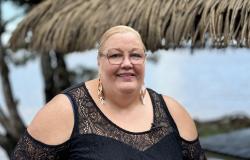
At home, 93% of the water we use is dedicated to hygiene and cleaning, according to the Water Information Center (CIEAU). Only 7% is used for our food and hydration. After the drought last year, communities have understood that they must save their blue gold. The Sophia Antipolis urban community (Casa) has therefore equipped its wastewater treatment plant, managed by Veolia, with a system for treating treated wastewater. Except that the conditions of use and storage are difficult to implement.
Suspended from the implementing decree
In order to free itself from this, Casa decided to move upmarket and tick the boxes necessary to comply with the European regulation. The latter sets a new benchmark that raises the quality requirements for treated wastewater.
After three months of work, the La Salis treatment plant can therefore boast of reusing treated wastewater (Reut) of “European class A”. If the French implementing decree, which is to be published in September, is not more restrictive than the European regulation, it will be able to store this treated water for longer in its tanks.
In broad terms, it will no longer be necessary to wait until night to water the roads or to limit itself to low-traffic areas. “The next step is to produce drinking water”laughs Jean Leonetti, the president of the Casa and mayor of Antibes. However, no one has dared to drink it straight from the vat.
Watering sports fields, washing boats
And now? “We are going to submit a file to the Departmental Directorate of Territories and the Sea (DDTM) to expand the use of treated wastewater and, for example, water sports fields or allow ports to wash boats with it”explains Olivier Berard, the Water and Sanitation Director of the Casa. The City of Antibes, the only one currently using this water, needs 35m3 per day. However, the treatment plant produces 50.
It could then make it available to other cities – “some have already expressed the wish”, underlines Jean Leonetti – or sell it to companies which use a lot of water and could be satisfied with it. Like the Vauban port and Marineland which, with the municipality, are among the three largest consumers in the territory. At a lower price than drinking water, obviously.
How does it work?
Until now, the water treated by the treatment plant – which is used for Reut (Reuse of treated wastewater) – was filtered under pressure before being filtered with activated carbon. A large number of elements were then already absorbed. It was then disinfected using UV rays, chlorinated, stored, pumped and then reused.
To achieve European classification, two steps were added. At the outlet of the treatment plant, the water will undergo a first stage of filtration on glass beads. Then it follows the usual path but, before passing to UV, it lands in an intermediate tank. Inside, it is filtered again but very finely. At 0.2 microns. After this ultrafiltration, it resumes the path described above: UV disinfection, chlorination, storage, pumping and distribution.
Now, all we have to do is be able to expand its uses to make full use of it.





